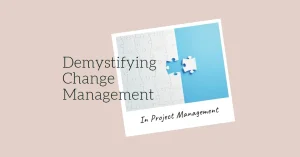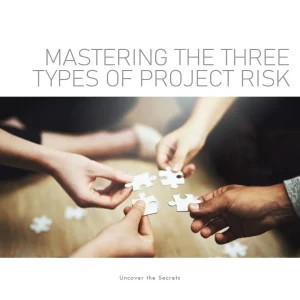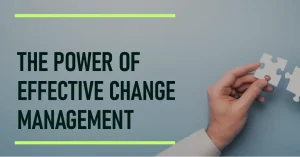1. Introduction
Hey there, fellow project managers and enthusiasts! Have you ever faced challenges in getting your team on the same page, or struggled with miscommunications that derailed your project’s progress? If you nodded your head in agreement, you’re not alone. Communication is the lifeblood of any project, and mastering it can be the difference between a successful project and a frustrating experience.
In this blog post, we’re going to dive into the fascinating world of project communications management. Together, we’ll explore the three main processes that can help you unlock the full potential of your team’s communication and set your projects on the path to success. So, buckle up and get ready to enhance your project management skills with these powerful communication techniques!
2. Overview of Project Communications Management
Before we delve into the three main processes, let’s take a moment to discuss what project communications management is all about. In a nutshell, it’s the systematic planning, implementing, monitoring, and controlling of all communication-related activities within a project. Simply put, it’s making sure that everyone involved in the project has the right information at the right time, ensuring smooth sailing from start to finish.
Now, you might be thinking, “I already communicate with my team all the time. Why do I need to manage it?” Great question! The truth is, even the best communicators can face challenges in a project environment. With multiple stakeholders, tight deadlines, and ever-changing requirements, it’s easy for crucial information to slip through the cracks or get lost in translation.
That’s where project communications management comes in. By taking a structured approach, you can minimize misunderstandings, keep your team in sync, and make more informed decisions throughout the project life cycle. Not only does this increase your chances of success, but it also fosters a positive work environment and builds trust among team members.
In the next sections, we’ll explore the three main processes that make up project communications management, and I’ll share some practical tips and insights to help you implement them in your own projects. Let’s get started!
3. The Three Main Project Communications Management Processes
Now that we’ve set the stage, let’s dive into the three core processes that form the backbone of project communications management. By mastering these techniques, you’ll be well on your way to becoming a communication superstar in your projects!
a. Plan Communications Management
The first step in our journey is to develop a clear and comprehensive communications plan. You know the old saying, “Fail to plan, plan to fail”? That definitely holds true for project communications.
A robust communications plan outlines the who, what, when, where, and how of all project-related communication. It ensures that everyone involved knows what information they need, when they can expect to receive it, and how it will be delivered.
Some key components to consider when creating your communications plan include:
- Stakeholder identification: Who needs to receive information, and who is responsible for providing it?
- Communication methods: What channels and tools will be used for different types of communication (e.g., email, meetings, instant messaging)?
- Frequency and format: How often will updates be provided, and in what format (e.g., written reports, presentations, or informal updates)?
- Communication escalation: What’s the process for escalating issues or concerns that arise during the project?
As you develop your plan, be sure to involve your team and stakeholders to ensure everyone’s needs are met and expectations are aligned.
b. Manage Communications
With your plan in place, it’s time to put it into action! Managing communications is all about executing your plan effectively and adapting to changes throughout the project life cycle.
Here are some strategies to help you manage communications like a pro:
- Use the right tools: Choose communication tools that best suit your team’s needs and preferences. This might include project management software, email, instant messaging, or even good old-fashioned face-to-face meetings.
- Foster open dialogue: Encourage team members to share their thoughts, concerns, and ideas openly. This creates a culture of transparency and trust, which is essential for successful communication.
- Keep it concise: We all know that time is precious, especially in a project environment. Make sure your messages are clear, concise, and to the point to avoid information overload and confusion.
- Monitor progress: Regularly check in with your team and stakeholders to ensure your communication plan is working as intended. Be prepared to make adjustments as needed to keep everyone on the same page.
c. Monitor Communications
Last, but certainly not least, is the process of monitoring communications. This involves tracking and assessing the effectiveness of your communication efforts, identifying gaps or issues, and making adjustments as needed.
Here are some techniques to help you monitor communication effectiveness:
- Gather feedback: Regularly ask your team and stakeholders for their thoughts on how well communication is working. Are they receiving the information they need? Are there any obstacles or challenges that need to be addressed?
- Measure success: Use key performance indicators (KPIs) to track the success of your communication efforts. This might include metrics like response times, meeting attendance, or stakeholder satisfaction.
- Address gaps: If you identify any communication gaps or issues, take action to address them promptly. This might involve updating your communication plan, providing additional training, or implementing new tools or processes.
- Adjust and adapt: Remember that your communication plan isn’t set in stone. As your project evolves, be prepared to make adjustments to ensure continued success.
By mastering these three processes, you’ll be well-equipped to navigate the complexities of project communications and keep your team and stakeholders informed and engaged throughout your project journey.
4. Real-world Examples
Now that we’ve covered the theory, let’s bring it to life with some real-world examples of successful project communications management. These stories will not only illustrate the power of these processes in action but also provide valuable lessons and best practices that you can apply in your own projects.
Example 1: Turning Around a Troubled Project
Imagine a software development project that was plagued by miscommunications, missed deadlines, and unhappy stakeholders. The project manager realized that the root cause of these issues was a lack of clear and effective communication. By implementing a comprehensive communications plan, they were able to get the project back on track.
The plan included:
- Weekly progress reports to stakeholders
- Regular team meetings to discuss updates and address issues
- A shared project dashboard to provide real-time visibility into progress
As a result of these changes, the team became more aligned, stakeholders were better informed, and the project was ultimately delivered on time and within budget.
Example 2: Uniting a Global Team
In another example, a project manager was tasked with leading a team of remote workers from around the world on a major product launch. With team members spread across different time zones and cultural backgrounds, communication was a significant challenge.
To overcome this hurdle, the project manager:
- Established a “communication hub” using collaboration tools like Slack and Trello
- Scheduled regular video conferences to facilitate face-to-face communication
- Set up a process for translating and sharing key documents and updates in multiple languages
By making communication a top priority, the project manager was able to foster a sense of unity and collaboration among the diverse team members, ultimately leading to a successful product launch.
These real-world examples demonstrate the power of effective project communications management. By applying the lessons learned and best practices from these stories, you’ll be well on your way to unlocking the full potential of your own projects.
5. Conclusion
Congratulations, my fellow project management enthusiasts! We’ve reached the end of our journey through the world of project communications management. I hope you’ve found this exploration of the three main processes insightful and inspiring. As we’ve seen, mastering the art of planning, managing, and monitoring communications can have a profound impact on the success of your projects.
To recap, remember the following key takeaways:
- Develop a clear and comprehensive communications plan that outlines the who, what, when, where, and how of all project-related communication
- Foster a culture of open dialogue and transparency by choosing the right communication tools, keeping messages concise, and encouraging feedback
- Regularly monitor and assess the effectiveness of your communication efforts, addressing any gaps or issues that arise and adapting your strategies as needed
By implementing these processes in your own projects, you’ll not only improve your chances of success but also create a more positive and collaborative work environment for your team.
So, what are you waiting for? Go forth and harness the power of project communications management to unlock the full potential of your projects. Here’s to your continued growth and success in the exciting world of project management!
To find out how Artificial Intelligence is changing the Project Management landscape, you have enjoy reading this article https://www.shaunstoltz.com/did-artificial-intelligence-just-change-everything-about-project-management/
Find out more about Shaun Stoltz https://www.shaunstoltz.com/about/
This post was written by an AI and reviewed/edited by a human.



